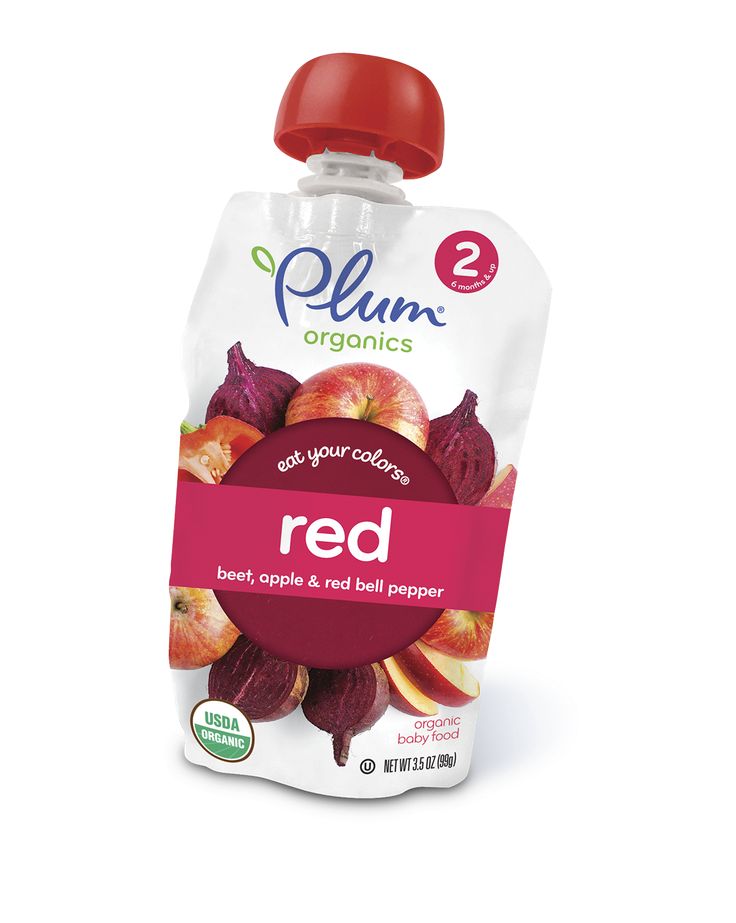Baby food radish
Radish For Babies - When to Introduce, Benefits, and Precautions
Being a new parent is a happy responsibility and sometimes a task you want to fulfil with perfection. You do not want to miss out on any nutrition, especially when it comes to feeding solids to your baby. However, there are quite a lot of nutritious options that you can try on once your baby is old enough to take solids. Boiled vegetables and vegetable puree are the best options for solid feeding for your baby. It is common for any parent to feel overwhelmed about providing the best nutrition for their baby. Did you know that you can also include radishes in your baby’s diet? This article tells you everything that you need to know about radish for babies, their nutritional value, benefits, and side effects.
Radishes have good nutrition that can meet your baby’s needs. It is important that you provide all the required nutrition for your little one’s proper growth. Well sometimes it can be confusing, and you may feel that you have run out of options. Do not worry, we’ve given a few recipes that you can try with radish. Radish is a common vegetable in Indian kitchens which is used in cooking parathas, lentil soup or sambar radish leaves are also highly nutritious and rich in fiber. Now let’s get into the article and see how radish can be another addition to your baby’s nutritious diet.
In This Article
- When Can You Introduce Radish to Your Baby?
- Nutritional Value of Radish
- Amazing Top 5 Health Benefits of Radish For Babies
- How Do You Introduce Radish to Your Baby?
- Precautions to Take While Introducing Radish For Babies
- Are There Any Side Effects of Radish For Babies?
- Top 3 Tasty and Healthy Radish Recipes For Babies
- FAQ’s
When Can You Introduce Radish to Your Baby?
Once your baby is ready to eat solids (6 months and above) slowly introduce them to different kinds of vegetables. Radish can be one of them, but it requires special attention before you introduce it to your baby. Being a hard vegetable, even after cooking it fully, radishes can be difficult to digest for your baby because of the immature digestive system. For this reason, you may want to try a very small amount of radish if you are feeding that for the first time.
Radish can be one of them, but it requires special attention before you introduce it to your baby. Being a hard vegetable, even after cooking it fully, radishes can be difficult to digest for your baby because of the immature digestive system. For this reason, you may want to try a very small amount of radish if you are feeding that for the first time.
It is always suggested to wait for a day or two and observe the reactions. If you do not see any digestive issues after feeding radish to your baby you can continue with that as a portion of basic solid food for your little one. However, it is suggestible to feed radish once your baby turns a year old. It is then the digestive system is matured enough to digest hard vegetables like radish. Also, note that radish can cause gas trouble in babies, it also contains high sodium content.
Nutritional Value of Radish
Radish or Mooli is a common root vegetable found in most Indian kitchens. Daikon radishes are white and are the most commonly used radishes in India. A well-cooked radish can be good nutrition for your baby. The below table provides the appropriate nutritional value of cooked daikon radish per 100 gms.
Daikon radishes are white and are the most commonly used radishes in India. A well-cooked radish can be good nutrition for your baby. The below table provides the appropriate nutritional value of cooked daikon radish per 100 gms.
| Nutrients | Value |
| Vitamin A, RAE | 11 mcg |
| Beta Carotene | 9 mcg |
| Lutein + Zeaxanthin | 9 mcg |
| Retinol | 10 mcg |
| Folate (Vitamin B9) | 21 mcg |
| Vitamin C (Ascorbic Acid) | 12.2 mg |
| Vitamin E (Alpha Tocopherol) | 0.30 mg |
| Vitamin K | 3.6 mcg |
| Choline | 6. 5 mg 5 mg |
| Calcium | 25 mg |
| Copper | 0.05 mg |
| Iron | 0.33 mg |
| Magnesium | 10 mg |
| Phosphorus | 20 mg |
| Potassium | 226 mg |
| Selenium | 0.60 mcg |
| Sodium | 160 mg |
| Zinc | 0.27 mg |
| Protein | 0.67 g |
| Carbohydrate | 3.30 g |
| Fiber | 1.50 g |
| Sugars | 1.80 g |
| Saturated Fatty Acids | 0.752 g |
| Monounsaturated Fatty Acids | 0.948 g |
| Polyunsaturated Fatty Acids | 0. 822 g 822 g |
| Water | 92.56 g |
Amazing Top 5 Health Benefits of Radish For Babies
Among many good things that Radishes provide, here are a few important health benefits that your baby can gain by eating radishes.
1. Acts as an Immunity Booster
Radishes are immunity boosters. The presence of myrosinase, an enzyme family that acts as a powerful anticancer agent makes radish an important vegetable to be included in your baby’s diet. Radishes also increase antibacterial and antiviral properties in the body thus helping the baby stay away from seasonal infections.
2. Helps in Better Digestion and Bowel Movement
The amount of fiber and water content present in radishes helps your baby’s digestive system stay active. Radishes help improve gut health and boost digestion and ease bowel movements. This can help the baby stay away from constipation and other digestive issues. Radishes also boost bile production which plays an important role in digestion.
This can help the baby stay away from constipation and other digestive issues. Radishes also boost bile production which plays an important role in digestion.
[Read : Constipation In Babies]
3. Helps in Removing Toxins From the Body and Aids in Kidney Functioning
A healthy kidney functioning is vital to send the toxins out of the body. Radish acts as a diuretic and helps purify urine and reduce the fluids in the body.
4. Rich in Antioxidants
Radishes are rich in antioxidants. It will help reduce free radicals and control the cells and tissues from undergoing oxidative stress.
5. Prevents Cardiovascular Diseases and Controls Blood Pressure
Being rich in minerals and antioxidants, radishes help your baby stay away from cardiovascular diseases in the future. Radishes are rich in potassium which plays an important role in blood pressure control.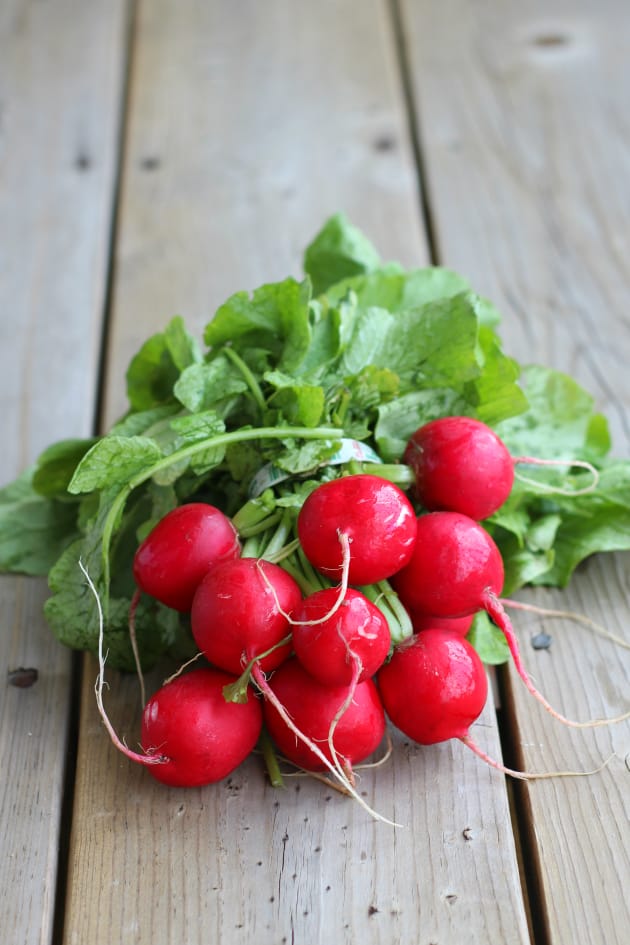
How Do You Introduce Radish to Your Baby?
Ensure to buy tender and organic radishes to feed your baby. Introduce a small pea-sized and well-cooked radish. It is very important to cook the radish fully before you feed the baby. Wait for a day or two to see if there is any reaction. You can continue including radish in your baby’s diet if you do not see any such unwanted reactions. But it is suggested to wait until the baby turns a year old and their digestive system is mature enough to digest such hard root vegetables as radish.
You can introduce radish to your baby once they are ready to eat solids. However, ensure to get an appointment with your doctor before deciding to introduce radish into your baby’s diet. Because radishes are high in sodium content, giving too much radish to your baby can upset their stomach.
[Read : The 3-Day Wait Rule For Babies To Introduce Solids]
Precautions to Take While Introducing Radish For Babies
Radishes are soft and mushy when cooked well.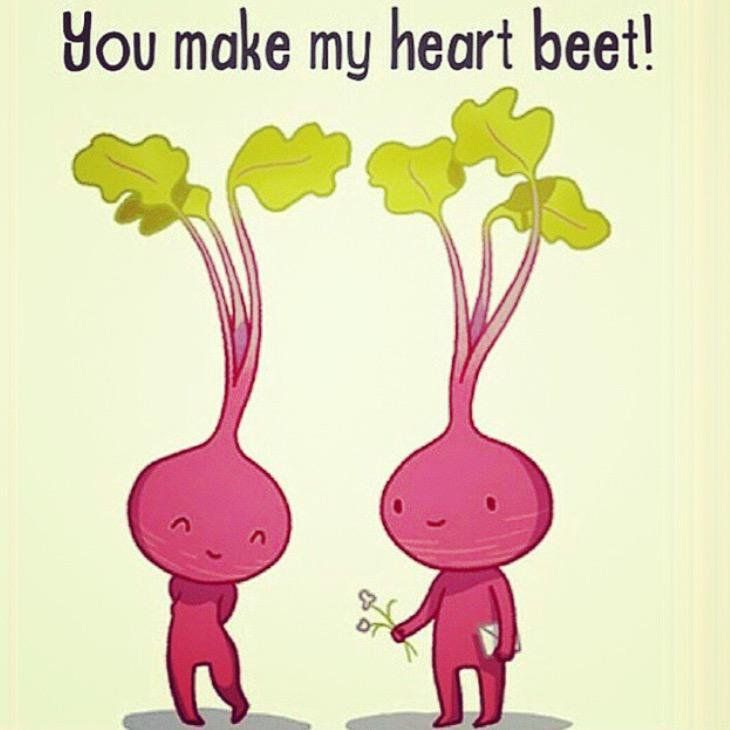 But, when you plan to introduce radish to your baby, you might need to consider a few precautions.
But, when you plan to introduce radish to your baby, you might need to consider a few precautions.
- Radishes alone can be a choking hazard for young babies. Hence, it is important to dice, boil and mash them well before feeding.
- Ensure to combine them with other root vegetables if your baby is young and it is their first encounter with radishes.
- Do not continue feeding radishes if you see any reaction like stomach upset and loose stools.
- Being a hard vegetable, radish can be difficult to digest for your little one. So, wait until they completely adapt to solid foods before introducing radish.
- Ensure to give a small pea-sized radish to your baby and see if they can digest it.
- Once your baby is fine with digesting radish, you can increase the quantity slowly.
[Read : Infant Choking]
Are There Any Side Effects of Radish For Babies?
Radish potentially does not cause any side effects, if given in small quantities. However, it can cause stomach upset in younger babies when given too much. Some babies will not be able to digest radish, and that is when you should wait till your little one turns a year old. Sometimes radish can cause dehydration because of its diuretic property.
However, it can cause stomach upset in younger babies when given too much. Some babies will not be able to digest radish, and that is when you should wait till your little one turns a year old. Sometimes radish can cause dehydration because of its diuretic property.
Top 3 Tasty and Healthy Radish Recipes For Babies
Here are some healthy and tasty radish recipes that you can try for your baby
1. Radish-Carrot Rice Puree
Boil both radish and carrot together, cool, and mash them well. Mix a teaspoon of cooked rice to thicken the puree. It will make a soft and mushy food for your baby to slurp on easily.
2. Steamed Radish
If your baby is 9 months and above, you can give small pieces of well-steamed radish. Wash the radish thoroughly and peel it before steaming. Ensure it is cut into small pieces (to avoid choking) and you can slowly increase the size as the baby grows.
3. Radish Soup
You can also make a creamy soup with a radish and potato combination. Adding mild spice can enhance the taste and your baby may start loving it. Wash, peel, and pressure cook a small potato and a radish. Cool them down and blend them well, add very little amount of cumin powder to taste, and feed this to your baby.
Adding mild spice can enhance the taste and your baby may start loving it. Wash, peel, and pressure cook a small potato and a radish. Cool them down and blend them well, add very little amount of cumin powder to taste, and feed this to your baby.
Radish serves to be one of the best nutrition-filled vegetables for babies. It is a root vegetable and hard in nature and needs to be cooked completely before going into your baby’s tummy. Ensure to cook it properly as radishes can be a choking hazard for the baby. You can happily opt for radish as your baby’s first food. But, it is always better to consult your pediatrician when in doubt.
FAQ’s
1. Are Radishes Hard to Digest For Babies?
Being a root vegetable, raw radishes are hard. But they turn soft and mushy once you cook them well. Sometimes radishes can be hard to digest for younger babies, hence it is better to introduce them in very small amounts until your baby’s digestive system is mature enough.
2.
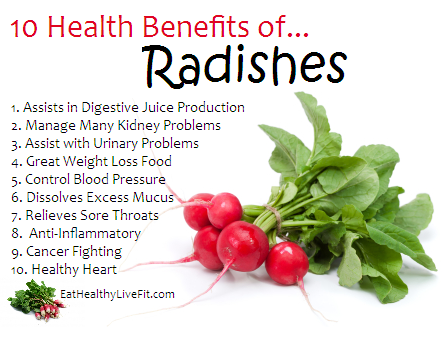 Are Radishes Gassy For Babies?
Are Radishes Gassy For Babies?Radishes sometimes can upset your baby’s stomach. Hence, it is important to keep a track of your baby’s reaction after introducing radish.
3. Does Radish Cause Constipation in Babies?
No, radishes do not lead to constipation in babies instead they aid the bowel movement and help in easy waste removal. Radish also aids in better digestion in babies.
Read Also: Ladies’ Finger For Babies – When to Introduce, Benefits and Precautions
Beet + Radish + Chia Seed Baby Food Puree
Home » Feeding Style » Baby Food Purees » Stage Two » Beet + Radish + Chia Seed Baby Food Puree
by Michele Olivier on March 5, 2015 (updated Oct 11, 2019)
Jump to Recipe
5 stars (1 rating)
This Chioggia Beet + Radish + Chia Seed puree is so easy to make, packed with protein, and requires just three ingredients. Sweet beets and spicy radishes are the perfect pair for a healthy, adventurous, and delicious homemade baby food recipe.
Sweet beets and spicy radishes are the perfect pair for a healthy, adventurous, and delicious homemade baby food recipe.
This puree is so pretty that I toyed with calling it ‘pretty in pink’ puree, but realizing that places me in the ‘I grew up in the 80’s camp’ made me feel old so I left it alone.
But really, you guys, this puree is so darn pretty!
Every time I go into my freezer, I see these cute little pink cubes of yumminess and instantly get happy.
Like really really happy!
Like I smile to myself and start twirling around my kitchen like I am a princess or something happy! Thus making Ellie gives me the oh mom, even though no one can see us, I am extremely and constantly embarrassed by you look while Parker just gives me the you have ten seconds to get that pink puree into my mouth before I start screaming in hunger look.
For Ellie’s sake, I prance even more on my way to the microwave to heat some up dinner for Parker.
Because, let’s face that facts that we are here to embarrass our kids and I intend to do a thorough job at it:)
My Whole Foods doesn’t carry Chioggia beets year round, so when I saw them there I had to grab them.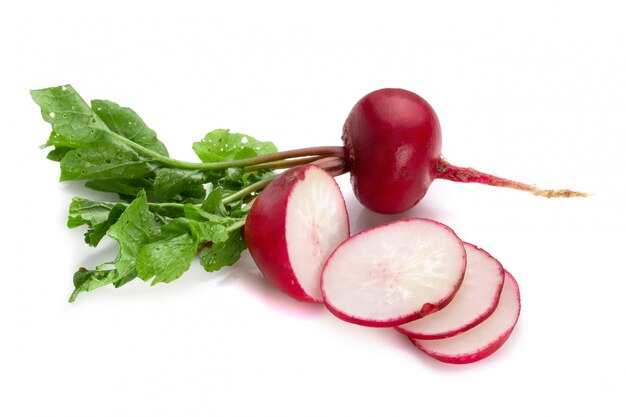 Have you had Chioggia beets? Most of the time they are white with pink ribbons on the inside and have a delicate but still sweet taste. I just love their fun color (and that they don’t bleed all over me) and buy and eat them up when they are in season (usually in the summer). If your store doesn’t carry Chioggia beets, this recipe would also work with any colored beets or radishes you can find.
Have you had Chioggia beets? Most of the time they are white with pink ribbons on the inside and have a delicate but still sweet taste. I just love their fun color (and that they don’t bleed all over me) and buy and eat them up when they are in season (usually in the summer). If your store doesn’t carry Chioggia beets, this recipe would also work with any colored beets or radishes you can find.
Even though they are gently boiled with radishes, which look almost identical in color, these beets and radishes are truly opposite in taste. While the beets are sweet and mild, the radishes are sharp and spicy. When pureed together, they become the perfect pair, a ying and yang to baby’s palette. I mixed in some chia seeds not only for an extra boost of omega 3’s but to also add just a pinch of earthiness to the puree. If you are feeling gutsy you can feel free to mix in a touch of lemon zest or chives to round out this puree.
Other ways to enjoy this puree:- Pair with a white fish puree for a soft but tasty dinner for baby.

- Serve over some ricotta cheese with a drizzle of olive oil for some extra healthy fat and omega-3’s.
- Serve to baby wearing a tutu and fairy wings.
- Alongside a serving of broccoli puree and apple puree.
- 4 medium chioggia beets, or any variety beet you prefer, trimmed
- 5-6 radishes, trimmed
- 1 tsp chia seeds
Place the beets into a medium saucepan and cover with water. Heat on medium heat until you reach a boil and then reduce heat and simmer, cover, and cook for 20 minutes.
Add the radishes into the saucepan with the beets and let cook for an additional 20 minutes, or until beets and radishes are tender enough to prick with a fork.
Using a slotted spoon, removed the beets and radishes and place on a stack of papertowels or dishcloth.
 Let cool slightly. Reserve steamer water.
Let cool slightly. Reserve steamer water.Peel the beets with your hands or small knife. The skin should eaily peel off.
Add the beets, radishes and chia seeds to a blender or food processor and puree for 1-2 minutes or until smooth, adding water from saucepan, breast milk or formula in 1/4 cup increments until you reach desired consistency.
Age: 6+ months
Yield: 12 ounces
Storage: Fridge – store in an airtight container in the fridge for 3-4 days. Freezer – can be frozen for up to 4 months (this and this are my favorite freezer storage containers).
Favorite Kitchen Tools: Get a list of my favorite kitchen tools to make the best baby food here!
Did you make this recipe?
Tag @babyfoode on Instagram and hashtag it #babyfoode!
Pin Recipe Email a Friend
Radish - to help the body | Motherhood
Long Mavra - tough, clumsy, evil at everyone, but sweet to everyone.
(Riddle about the radish)
For many centuries people have composed numerous sayings, riddles and even poems about radish. And not in vain! Our ancestors valued this root vegetable with an exotic bitter taste. The radish was eaten almost every day, which is why the saying "I'm tired of worse than the bitter radish" went. It was also the so-called "repentant vegetable", because it could be stored until spring. The people said: “The radish and horseradish have come, and the book of Ephraim” (that is, Great Lent has come). nine0009
“Why the bitter radish”
Whether in the garden, in the garden
Following the downpour,
At sunrise,
A rainbow came down from the sky,
Distributed to everyone by color.
Orange for carrots,
A green for cucumbers.
Even an eggplant in a new dress -
Blue suits him!
Only a radish, as luck would have it,
No luck with paints -
Either it is white,
Then, on the contrary, it is black . ..
..
And longing took her.
So it became bitter.
Radish in Latin means “root”. It grew wild in the Mediterranean countries and East Asia. Over time, it began to be actively cultivated by the entire ancient world. There is confirmation of this: a radish is depicted on the walls of the temple of Amun-Ra in Egypt. The radish was fed to the slaves who built the pyramids. In ancient Greece, this root crop was in high esteem: the Greeks brought its image of gold to Apollo, who, according to mythology, believed that a radish is worth as much gold as it weighs itself. nine0006
Today many people have forgotten about the great value of radish. Isn't that why we began to get sick often, almost constantly, trying uselessly to be treated with all sorts of miraculous drugs and drinks to boost immunity. It is much better to eat foods instead of medicines that have proven themselves for centuries as healthy and even medicinal food:
Whoever eats horseradish and radish rarely gets sick.
Horseradish and radish, onion and cabbage - they will not allow dashing. nine0006
How useful is radish?
In Rus', this root crop was considered an excellent remedy for a variety of diseases: "The radish often cures the plague." It has strong antimicrobial activity. A special substance - lysozyme, which is part of it, inhibits the growth of bacteria, fungi and protozoa.
The sharper and bitterer the taste, the more phytoncides in the vegetable. It should definitely be included in your diet in the off-season and especially in the cold season, with increased contact with sick people, flu epidemics and colds. The use of radish is an excellent natural preventive measure to maintain the body's defenses. nine0006
Radishes also have many medicinal properties. Its juice improves the digestion process. In folk medicine, it is used to treat vision problems, joint pain, stop bleeding, relieve swelling, treat atherosclerosis, cholelithiasis and cholecystitis, as a cough remedy. It improves appetite, removes toxins and toxins. In the old days, it was used as an antidote for poisoning with poisonous mushrooms.
It improves appetite, removes toxins and toxins. In the old days, it was used as an antidote for poisoning with poisonous mushrooms.
However, radish should be used with caution by people suffering from stomach ulcers. nine0009
To this day, radish is very loved and actively used in Japan, India, China, and Vietnam.
The following varieties of radish are distinguished: white (the sharpest), black (used in folk medicine), green and red, Chinese, daikon (Japanese). Black and green radish are more tender, green is even sweetish. Both root crops and young radish leaves are eaten, adding it to various salads and soups. Radish roots are consumed raw, boiled and fried, added to salads, appetizers, okroshka, borscht, soups, various meat and vegetable dishes. nine0006
Radish says - I'm good with honey, and honey says - I'm good without you
Radish with honey - an effective folk remedy for the treatment of colds, especially coughs. You can prepare the remedy as follows: in a black round radish we make a recess and pour honey inside.
 We leave for 5-6 hours. We drink the resulting juice.
We leave for 5-6 hours. We drink the resulting juice.
If you don’t like the smell, you can cut the radish into slices and put in a glass jar, season with honey , tightly close the lid and leave to infuse. nine0006
Dishes from radish
There are seven dishes in radish: radish teriha (grated), radish slices (slices),
radish with kvass, radish with butter, radish in pieces, radish in a bar and whole radish.
Russian proverb
The simplest recipe - radish with onion in its own juice : cut the radish into thin petals, briefly fill it with water (0.5 cup), drain some of the water, add onion, salt and sunflower oil. Delicious and healthy salad is ready! For this salad, it is better to use spicy radish - black and white. nine0006
Radish and carrot salad is also easy to prepare and tastes good: grate radish and carrot in a ratio of 2:1, salt and season with sour cream. Any variety of radish will do here.
Any variety of radish will do here.
Radish with croutons : hard radish varieties are ground on a grater, softer varieties are cut into petals and put on a dish, pour over kvass (50-100 ml) or vinegar with vegetable oil and freshly toasted rye breadcrumbs. Serve immediately on the table. It turns out the original crispy dish! nine0006
sweet radish salad is a perfect accompaniment to rich fatty meat dishes. To prepare it, cut the radish into strips or grind on a coarse grater, lightly sprinkle with powdered sugar and leave for a few minutes. Drain the resulting juice. Add a few tablespoons of honey and a little vinegar. Salad ready!
If you are embarrassed by the strong smell of radishes, just pour boiling water over them.
Try meat salad with radish. You will need for its preparation: 200 grams of any boiled meat fillet (pork, beef or chicken), 3 eggs, one radish, 1 onion, 1 carrot, salt to taste, sour cream or mayonnaise. nine0006
nine0006
Korean-style radish. Daikon cut into cubes, pour water and leave for 30 minutes. Drain the water and the resulting juice. Add red ground pepper (3 tablespoons), 200 grams of chopped green onions, 2 red sweet bell peppers, 200 grams of boiled and peeled shrimp. Add 1 tbsp. fish sauce, grated ginger, minced garlic, salt, sugar and rice wine (you can use sake). Stir and leave the salad for 3 days in the refrigerator. nine0006
Radish drink. To prepare a radish elixir, we need: squeeze the juice from 3 medium radishes and 3 apples, add 2 cups of boiled water, honey and salt to taste.
Radish with beets and prunes. Four boiled beets and one radish peeled and chopped on a coarse grater. Add 0.5 cups of finely chopped prunes, which were poured with boiling water in advance and left to swell for 25 minutes. Mix grated vegetables with prunes and season with vegetable (olive) oil. This salad is for 5 servings. nine0006
Mix grated vegetables with prunes and season with vegetable (olive) oil. This salad is for 5 servings. nine0006
In the next publications, the Maternity.ru portal will continue the theme of traditional folk vegetables.
What is useful radish| Roskachestvo
Varieties of radish and what are its health benefits? Who is not recommended to eat it?
Elena Syurakshina
endocrinologist of the highest category, candidate of medical sciences, nutritionist
- Useful properties of different species are similar, but there is a difference in taste. For example, daikon is more tender than white radish, and green radish has a sweet taste, making it an ideal ingredient for salads.
Supports respiratory health . All varieties of radish have antibacterial and antiviral properties, which makes this root vegetable useful in the fight against respiratory viruses, as well as their prevention.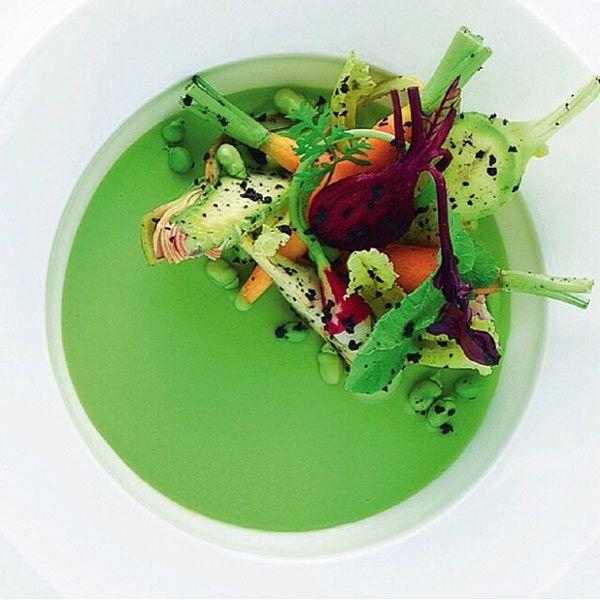
Often, infections provoke an increase in the formation of mucus, which enters the respiratory tract, thereby making it difficult to breathe. This problem most often affects asthmatics and people prone to allergies. The composition of the radish contains bioflavonoids - substances that stimulate lung function and reduce the frequency of asthma attacks.
Strengthens the immune system . Radish contains vitamin C, which helps to strengthen the immune system, helps the body in the production of white blood cells and has an antioxidant effect. Oxidation damages DNA and promotes the formation of defective cells, and regular consumption of foods rich in vitamin C helps to avoid these undesirable harmful effects. It should also be noted that a diet rich in antioxidants supports the body in the fight against infections and viruses, which minimizes the risks of complications and shortens the duration of the disease. nine0006
Helps maintain blood pressure levels . Radishes are also rich in potassium, a mineral that plays an important role in regulating blood pressure and keeping blood vessels healthy. Potassium helps to relax blood vessels, helps to get rid of accumulated water in the body, which helps maintain normal blood pressure.
Radishes are also rich in potassium, a mineral that plays an important role in regulating blood pressure and keeping blood vessels healthy. Potassium helps to relax blood vessels, helps to get rid of accumulated water in the body, which helps maintain normal blood pressure.
Normalizes digestion . Amylase, protease and other enzymes involved in the breakdown of carbohydrates and proteins are found in radishes and make this product very beneficial for those suffering from digestive problems. Radishes are also rich in fiber, which is essential for healthy bowel function and preventing constipation. nine0006
Has anti-inflammatory properties . The anti-inflammatory compounds found in the juice, roots, and leaves of various varieties of radishes help slow down chronic inflammation in the body. And this allows you to maintain heart health, prevent the development of arthritis, accelerate the recovery of the body after injuries or muscle strains.
Supports brain and nervous system health . Excessive stress is often the cause of dysfunction of the nervous system and brain. Under such circumstances, substances begin to be produced in the body that destroy brain cells and provoke a decrease in cognitive functions. To prevent the risk of developing such a disease, it is recommended to include foods rich in folates in your diet. Regular consumption of various types of radish will satisfy the body's need for folic acid and support proper brain function. It is also worth noting that radish is an excellent natural sedative that improves mood. nine0006
Excessive stress is often the cause of dysfunction of the nervous system and brain. Under such circumstances, substances begin to be produced in the body that destroy brain cells and provoke a decrease in cognitive functions. To prevent the risk of developing such a disease, it is recommended to include foods rich in folates in your diet. Regular consumption of various types of radish will satisfy the body's need for folic acid and support proper brain function. It is also worth noting that radish is an excellent natural sedative that improves mood. nine0006
Useful properties of daikon and black, white and green
Daikon
Daikon contains less essential mustard oils than other radish varieties, due to which the taste of this root crop is much more tender. The flesh of the daikon is crispy, in the upper part the taste is slightly sweet, and near the root it is more spicy. In addition to its exquisite taste, daikon has many useful properties. nine0006
nine0006
Black radish
It has a pronounced anti-inflammatory effect, because it contains phytoncides, which are also called natural antibiotics. Black radish juice can be beneficial for ailments such as bronchitis, coughs, and seasonal colds. Also, the black root helps to cleanse the body of toxins, reduce the level of "bad" cholesterol in the blood, strengthen the walls of blood vessels and prevent the development of cardiovascular diseases. nine0006
Green radish
Green radish is rich in vitamin A, it improves eye health and is a powerful antioxidant that helps fight oxidative stress. Green root is good for the nervous system, it increases the regeneration of body tissues and has a positive effect on the condition of the skin and hair. Also, green radish reduces blood pressure and strengthens the immune system.
White radish
Thanks to vitamins and biologically active components, white radish strengthens the immune system, destroys harmful bacteria and viruses, cleanses the body of toxins, speeds up metabolism and stimulates the brain.
The benefits of radish for the female and male body
-
According to nutritionists, radish helps to normalize hormonal levels, reduce discomfort during menstruation, and alleviate symptoms and mood swings during PMS and menopause. The root crop improves the condition of the skin and slows down the aging process, which allows it to be used as part of natural cosmetics for skin care. nine0006
-
Radish is able to increase testosterone levels in men, stimulate sexual activity, increase libido and relieve inflammation of the prostate. Also, the root crop helps to improve digestion and relieve constipation.
Contraindications
- Radishes should be excluded from the diet for those who are diagnosed with gastrointestinal diseases in the acute stage: stomach or duodenal ulcers, inflammatory bowel disease, gastritis with high acidity. nine0241
- Doctors recommend refraining from eating radish (especially white) for people with kidney failure.

- Pregnant women are advised to use radish with caution, because the composition of the root crop contains essential oils that can provoke an increased tone of the uterus.
- When breastfeeding, radish can cause unpleasant symptoms from the gastrointestinal tract in both mother and baby, so eating radish is in small quantities, paying attention to the reaction of the body. nine0241
- Contraindication for the use of radish - individual intolerance and allergic reactions.
How to choose a good radish
Give preference to a medium-sized radish, because too large root crops will not be juicy enough. The peel of the radish should be free of visible mechanical damage, cracks, dents, spots, bumps, mold. A quality root crop should be fragrant, juicy, elastic. Sluggish root crops indicate improper storage, they contain much less useful vitamins and minerals. nine0006
It is best to store the radish in the cellar, but if this is not possible, then a glazed balcony will do, subject to a temperature regime of 1–3 degrees, it is better to store the root crop in a box or bag.











